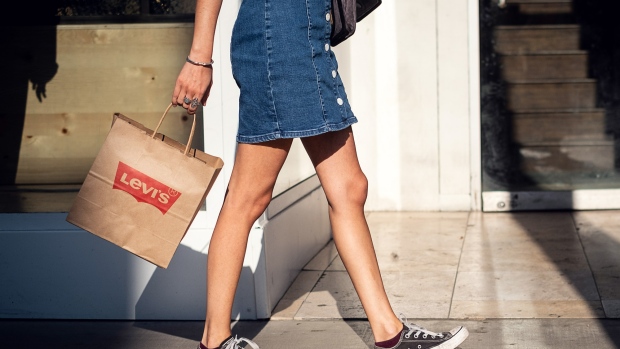Mar 21, 2019
Levi Strauss climbs in return to market in year's top U.S. IPO
, Bloomberg News

Levi Strauss & Co. (LEVI.N) soared in its return as a public company, in the biggest test so far this year of a slow-to-warm-up market for U.S. listings.
The iconic apparel maker’s initial public offering showed investors are ready to buy into a company that wants to be known for more than just denim. Levi Strauss shares opened at US$22.22 apiece Thursday after the company raised US$623 million selling almost 36.7 million shares at US$17 apiece. Shares were up 32 per cent to US$22.44 at 2:54 p.m. in New York, giving the company a market value of US$8.7 billion.
“The fact that the stock opened up so dramatically does show the appetite for this brand both by investors and also consumers,” Levi Strauss Chief Executive Officer Chip Bergh -- wearing a pair of Levi’s jeans -- said in an interview at the New York Stock Exchange.
Early indications had suggested the share sale was going well: Investors were advised to place their orders above the marketed price range to avoid missing out, a person familiar with the matter said earlier.
Outside NYSE on Thursday, a large red sign displayed the Levi’s name and #LiveinLevis. Inside, workers took advantage of the temporary suspension of the exchange’s “no jeans” policy to mark the IPO. People arrived outfitted in light-washed blue jean jackets, dark blue jeans and denim shirts.
The amount raised makes Levi Strauss’s listing the largest on a U.S. exchange so far this year -- at least until Lyft Inc.’s offering set for next week. The ride-hailing company is seeking to be valued at US$19.6 billion, or as much as US$23.3 billion including some restricted equity units for employees and others that aren’t yet fully available to them.
Lyft will price shares in its already oversubscribed offering on March 28, with larger rival Uber Technologies Inc. lined up to follow before the end of the first half. Uber could be valued at as much as US$120 billion, people familiar with the matter have said.
Slack, Postmates
Those and other high-profile listings are expected to continue over the next few months, making 2019 a bumper year for IPOs in the U.S. Office chat software maker Slack Technologies Inc. and food-delivery app Postmates Inc. are among those considering listings.
Levi Strauss’s return to the public market -- it was taken private in 1985 by members of the Haas family who were descendants of Strauss -- comes after a long turnaround that hit a high-water mark last year when sales increased 14 per cent to US$5.6 billion, its best growth in more than a quarter century. The company, which patented the first blue jeans more than 145 years ago, benefited from a rebound in the global jeans market and a years-long push to diversify. Sales of tops rose 38 per cent and now account for 20 per cent of the business.
Becoming more than a jeans brand is crucial to the long-term health of the company if it’s going to withstand disruption from fashion trends and competition. In the 1990s, the rise of khakis and trousers slowed growth, while the past few years have seen consumers shift toward more comfy and casual looks -- dubbed athleisure -- that have turned yoga gear and jogging pants into everyday wear.
China Opportunity
Levi Strauss has also pitched investors on what it sees as a big opportunity in China. The company generates about 17 per cent of its revenue in Asia and just 3 per cent comes from world’s second-largest economy. That’s led Bergh, who joined in 2011 after almost three decades at Procter & Gamble Co., to see a path to US$10 billion in sales.
“There’s no time frame associated with it, but I’m not going anywhere,” Bergh said. “The IPO is not the finish line, it’s a new starting line.”
Still, there are plenty of risks. The global economy, including China, is slowing down. Many brands have aspired to become head-to-toe properties, only to fail. And even with the acceleration of growth over the past two years, annual sales gains averaged less than 3 per cent since Bergh’s arrival. Above all, the iconic brand is still closely tied to jeans, a mature and competitive category.
“They’ve really improved the position of the business,” said Michael Zuccaro, an analyst for Moody’s Investors Service who covers the company’s publicly traded bonds. “Nonetheless, they are still concentrated in pants and men’s jeans, which is still a concern.”
The retailer’s IPO was led by Goldman Sachs Group Inc. and JPMorgan Chase & Co. The stock is trading on the New York Stock Exchange under the ticker LEVI.

